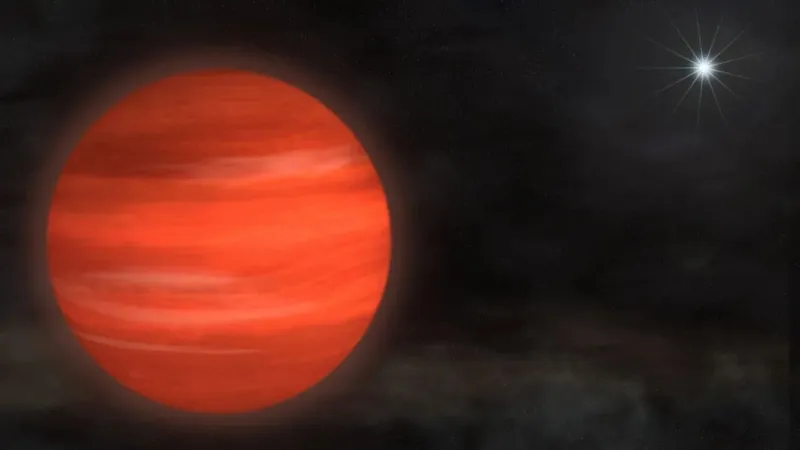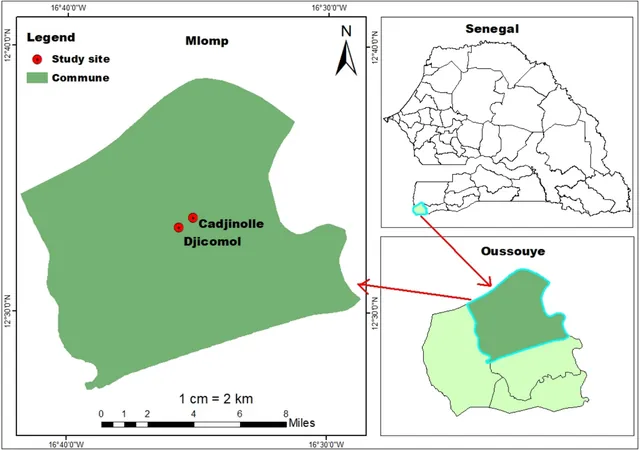
Unveiling the Chaotic Origins of Super-Jupiter Planets: A Cosmic Catastrophe!
2025-01-09
Author: John Tan
Cosmic Collisions: The Birth of Behemoths
For years, scientists have grappled with a pivotal question: Do super-Jupiters form as massive entities from the outset or grow larger by merging with other gas giants? This question not only elucidates the formation of these giants but also offers insights into why our solar system lacks its own super-Jupiter.
Astronomer Jiayin Dong from the Flatiron Institute led a research team that employed sophisticated computer models to simulate the evolution of numerous star systems. These simulations were then compared to actual measurements of gas giant masses and their orbital characteristics. The findings indicate that star systems with colliding gas giants are more likely to produce super-Jupiters with orbits resembling the eccentric paths observed in the cosmos today.
Interestingly, this study found that the most massive gas giants tend to have irregular, elongated orbits—characteristics that hint at a tumultuous history involving close encounters and collisions with other planetary bodies. In contrast, smaller gas giants are less likely to thrive in such chaotic environments, often ejected from stellar systems or absorbed by their massive counterparts. As Dong pointed out, this leads to a phenomenon known as "survivor bias," where only the largest planets remain visible in these dynamic systems.
The Catastrophic Pathway to Planetary Giants
When the research team simulated the growth of gas giants starting from massive origins, they discovered varied orbital types, including both circular and eccentric paths. However, when the scenario involved smaller planets merging to create super-Jupiters, the resulting orbits were distinctly eccentric. This aligns closely with what astronomers observe in the universe, where super-Jupiters typically follow elongated orbits, further reinforcing the idea that most of these giants formed through the catastrophic merging of colliding gas planets.
To bolster their findings, Dong emphasized the need for more observational data regarding super-Jupiters’ orbital inclinations and atmospheric compositions. This additional evidence could solidify the claims derived from their simulations.
A Quest to Discover More Massive Worlds
The research team aims to expand their observations to explore super-Jupiters and their smaller counterparts. The gas giants analyzed in this study all orbit relatively close to their stars, with some completing an orbit in just a few days while others take up to three Earth years. The team looks to discern whether cooler gas giants located further from their stars also formed through chaotic collisions or if they emerged as isolated entities in their stellar neighborhoods.
Moreover, the search is on for smaller planets, comparable in size to Jupiter, which can help validate the conclusions drawn from the simulations. Preliminary findings suggested that super-Jupiters involved in a series of planetary collisions typically have smaller, Jupiter-like siblings. In contrast, when massive gas giants form from unusually large gas clumps, all resulting planets are massive super-Jupiters.
To further this inquiry, Dong and her team will utilize advanced telescope instruments such as the Planet Finder Spectrograph in Chile and the NEID instrument on the WIYN telescope in Arizona, aiming to detect the subtle wobbles of distant stars influenced by orbiting planets.
Conclusion
The implications of this research are monumental—understanding the chaotic formation of super-Jupiters not only deepens our comprehension of planetary evolution but also opens new avenues in the hunt for exoplanets and the intricacies of our universe. Brace yourselves as we plunge into the enigmatic and tumultuous world of super-Jupiters!




 Brasil (PT)
Brasil (PT)
 Canada (EN)
Canada (EN)
 Chile (ES)
Chile (ES)
 Česko (CS)
Česko (CS)
 대한민국 (KO)
대한민국 (KO)
 España (ES)
España (ES)
 France (FR)
France (FR)
 Hong Kong (EN)
Hong Kong (EN)
 Italia (IT)
Italia (IT)
 日本 (JA)
日本 (JA)
 Magyarország (HU)
Magyarország (HU)
 Norge (NO)
Norge (NO)
 Polska (PL)
Polska (PL)
 Schweiz (DE)
Schweiz (DE)
 Singapore (EN)
Singapore (EN)
 Sverige (SV)
Sverige (SV)
 Suomi (FI)
Suomi (FI)
 Türkiye (TR)
Türkiye (TR)
 الإمارات العربية المتحدة (AR)
الإمارات العربية المتحدة (AR)